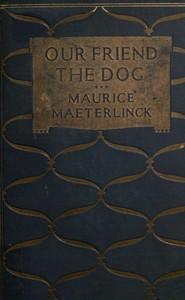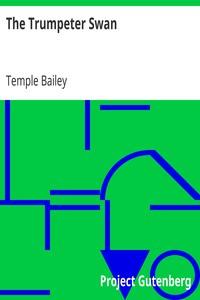|
|
Read this ebook for free! No credit card needed, absolutely nothing to pay.Words: 65887 in 22 pages
This is an ebook sharing website. You can read the uploaded ebooks for free here. No credit cards needed, nothing to pay. If you want to own a digital copy of the ebook, or want to read offline with your favorite ebook-reader, then you can choose to buy and download the ebook.

: Pathfinders of the West Being the Thrilling Story of the Adventures of the Men Who Discovered the Great Northwest: Radisson La Vérendrye Lewis and Clark by Laut Agnes C - Lewis and Clark Expedition (1804-1806); Radisson Pierre Esprit approximately 1636-17@FreeBooksTue 06 Jun, 2023 Toward winter four hundred Crees came to escort the explorers to the wooded lake region yet farther west towards the land of the Assiniboines, the modern Manitoba. "We were Caesars," writes Radisson. "There was no one to contradict us. We went away free from any burden, while those poor miserables thought themselves happy to carry our equipage in the hope of getting a brass ring, or an awl, or a needle. . . . They admired our actions more than the fools of Paris their king. . . . They made a great noise, calling us gods and devils. We marched four days through the woods. The country was beautiful with clear parks. At last we came within a league of the Cree cabins, where we spent the night that we might enter the encampment with pomp the next day. The swiftest Indians ran ahead to warn the people of our coming." Embarking in boats, where the water was open, the two explorers came to the Cree lodges. They were welcomed with shouts. Messengers marched in front, scattering presents from the white men,--kettles to call all to a feast of friendship; knives to encourage the warriors to be brave; swords to signify that the white men would fight all enemies of the Cree; and abundance of trinkets--needles and awls and combs and tin mirrors--for the women. The Indians prostrated themselves as slaves; and the explorers were conducted to a grand council of welcome. A feast was held, followed by a symbolic dance in celebration of the white men's presence. Their entry to the Great Northwest had been a triumph: but they could not escape the privations of the explorer's life. Winter set in with a severity to make up for the long, late autumn. Snow fell continuously till day and night were as one, the sombre forests muffled to silence with the wild creatures driven for shelter to secret haunts. Four hundred men had brought the explorers north. Allowing an average of four to each family, there must have been sixteen hundred people in the encampment of Crees. To prevent famine, the Crees scattered to the winter hunting-grounds, arranging to come together again in two months at a northern rendezvous. When Radisson and Groseillers came to the rendezvous, they learned that the gathering hunters had had poor luck. Food was short. To make matters worse, heavy rains were followed by sharp frost. The snow became iced over, destroying rabbit and grouse, which feed the large game. Radisson noticed that the Indians often snatched food from the hands of hungry children. More starving Crees continued to come into camp. Soon the husbands were taking the wives' share of food, and the women were subsisting on dried pelts. The Crees became too weak to carry their snow-shoes, or to gather wood for fire. The cries of the dying broke the deathly stillness of the winter forest; and the strong began to dog the footsteps of the weak. "Good God, have mercy on these innocent people," writes Radisson; "have mercy on us who acknowledge Thee!" Digging through the snow with their rackets, some of the Crees got roots to eat. Others tore the bark from trees and made a kind of soup that kept them alive. Two weeks after the famine set in, the Indians were boiling the pulverized bones of the waste heap. After that the only food was the buckskin that had been tanned for clothing. "We ate it so eagerly," writes Radisson, "that our gums did bleed. . . . We became the image of death." Before the spring five hundred Crees had died of famine. Radisson and Groseillers scarcely had strength to drag the dead from the tepees. The Indians thought that Groseillers had been fed by some fiend, for his heavy, black beard covered his thin face. Radisson they loved, because his beardless face looked as gaunt as theirs. Relief came with the breaking of the weather. The rain washed the iced snows away; deer began to roam; and with the opening of the rivers came two messengers from the Sioux to invite Radisson and Groseillers to visit their nation. The two Sioux had a dog, which they refused to sell for all Radisson's gifts. The Crees dared not offend the Sioux ambassadors by stealing the worthless cur on which such hungry eyes were cast, but at night Radisson slipped up to the Sioux tepee. The dog came prowling out. Radisson stabbed it so suddenly that it dropped without a sound. Hurrying back, he boiled and fed the meat to the famishing Crees. When the Sioux returned to their own country, they sent a score of slaves with food for the starving encampment. No doubt Radisson had plied the first messengers with gifts; for the slaves brought word that thirty picked runners from the Sioux were coming to escort the white men to the prairie. To receive their benefactors, and also, perhaps, to show that they were not defenceless, the Crees at once constructed a fort; for Cree and Sioux had been enemies from time immemorial. In two days came the runners, clad only in short garments, and carrying bow and quiver. The Crees led the young braves to the fort. Kettles were set out. Fagged from the long run, the Sioux ate without a word. At the end of the meal one rose. Shooting an arrow into the air as a sign that he called Deity to witness the truth of his words, he proclaimed in a loud voice that the elders of the Sioux nation would arrive next day at the fort to make a treaty with the French. The news was no proof of generosity. The Sioux were the great warriors of the West. They knew very well that whoever formed an alliance with the French would obtain firearms; and firearms meant victory against all other tribes. The news set the Crees by the ears. Warriors hastened from the forests to defend the fort. The next day came the elders of the Sioux in pomp. They were preceded by the young braves bearing bows and arrows and buffalo-skin shields on which were drawn figures portraying victories. Their hair was turned up in a stiff crest surmounted by eagle feathers, and their bodies were painted bright vermilion. Behind came the elders, with medicine-bags of rattlesnake skin streaming from their shoulders and long strings of bears' claws hanging from neck and wrist. They were dressed in buckskin, garnished with porcupine quills, and wore moccasins of buffalo hide, with the hair dangling from the heel. In the belt of each was a skull-cracker--a sort of sling stone with a long handle--and a war-hatchet. Each elder carried a peace pipe set with precious stones, and stuck in the stem were the quills of the war eagle to represent enemies slain. Women slaves followed, loaded with skins for the elders' tents. A great fire had been kindled inside the court of the Cree stockades. Round the pavilion the Sioux elders seated themselves. First, they solemnly smoked the calumet of peace. Then the chief of the Sioux rose and chanted a song, giving thanks for their safe journey. Setting aside gifts of rare beaver pelts, he declared that the Sioux had come to make friends with the French, who were masters of peace and war; that the elders would conduct the white men back to the Sioux country; that the mountains were levelled and the valleys cast up, and the way made smooth, and branches strewn on the ground for the white men's feet, and streams bridged, and the doors of the tepees open. Let the French come to the Sioux! The Indians would die for the French. A gift was presented to invoke the friendship of the Crees. Another rich gift of furs let out the secret of the Sioux' anxiety: it was that the French might give the Sioux "thunder weapons," meaning guns. The speech being finished, the Crees set a feast before their guests. To this feast Radisson and Groseillers came in a style that eclipsed the Sioux. Cree warriors marched in front, carrying guns. Radisson and Groseillers were dressed in armor. At their belts they wore pistol, sword, and dagger. On their heads were crowns of colored porcupine quills. Two pages carried the dishes and spoons to be used at the feast; and four Cree magicians followed with smoking calumets in their hands. Four Indian maids carried bearskins to place on the ground when the two explorers deigned to sit down. Inside the fort more than six hundred councillors had assembled. Outside were gathered a thousand spectators. As Radisson and Groseillers entered, an old Cree flung a peace pipe at the explorers' feet and sang a song of thanksgiving to the sun that he had lived to see "those terrible men whose words made the earth quake." Stripping himself of his costly furs, he placed them on the white men's shoulders, shouting: "Ye are masters over us; dead or alive, dispose of us as you will." Fourteen days later Radisson and Groseillers set out for the Sioux country, or what are now known as the Northwestern states. On the third voyage Radisson came to the Sioux from the south. On this voyage, he came to them from the northeast. He found that the tribe numbered seven thousand men of fighting age. He remarked that the Sioux used a kind of coke or peat for fire instead of wood. While he heard of the tribes that used coal for fire, he does not relate that he went to them on this trip. Again he heard of the mountains far inland, where the Indians found copper and lead and a kind of stone that was transparent. He remained six weeks with the Sioux, hunting buffalo and deer. Between the Missouri and the Saskatchewan ran a well-beaten trail northeastward, which was used by the Crees and the Sioux in their wars. It is probable that the Sioux escorted Radisson back to the Crees by this trail, till he was across what is now the boundary between Minnesota and Canada, and could strike directly eastward for the Lake of the Woods region, or the hinterland between James Bay and Lake Superior. The Crees got Radisson ashore, and there he lay in agony for eight days. The Indians were preparing to set out for the North. They invited Radisson to go with them. His sprain had not healed; but he could not miss the opportunity of approaching the Bay of the North. For two days he marched with the hunters, enduring torture at every step. The third day he could go no farther and they deserted him. Groseillers had gone hunting with another band of Crees. Radisson had neither gun nor hatchet, and the Indians left him only ten pounds of pemmican. After a short rest he journeyed painfully on, following the trail of the marching Crees. On the fifth day he found the frame of a deserted wigwam. Covering it with branches of trees and kindling a fire to drive off beasts of prey, he crept in and lay down to sleep. He was awakened by a crackling of flame. The fire had caught the pine boughs and the tepee was in a blaze. Radisson flung his snow-shoes and clothing as far as he could, and broke from the fire-trap. Half-dressed and lame, shuddering with cold and hunger, he felt through the dark over the snow for his clothing. A far cry rang through the forest like the bay of the wolf pack. Radisson kept solitary watch till morning, when he found that the cry came from Indians sent out to find him by Groseillers. He was taken to an encampment, where the Crees were building canoes to go to the Bay of the North. The entire band, with the two explorers, then launched on the rivers flowing north. "We were in danger to perish a thousand times from the ice jam," writes Radisson. ". . . At last we came full sail from a deep bay . . . we came to the seaside, where we found an old house all demolished and battered with bullets. . . . They told us about Europeans. . . . We went from isle to isle all that summer. . . . This region had a great store of cows . . . . We went farther to see the place that the Indians were to pass the summer. . . . The river came from the lake that empties itself in . . . the Saguenay . . . a hundred leagues from the great river of Canada . . . to where we were in the Bay of the North. . . . We passed the summer quietly coasting the seaside. . . . The people here burn not their prisoners, but knock them on the head. . . . They have a store of turquoise. . . . They find green stones, very fine, at the same Bay of the Sea . . . . We went up another river to the Upper Lake ." From the Indians of the bay, Radisson heard of another lake leagues to the north, whose upper end was always frozen. This was probably some vague story of the lakes in the region that was to become known two centuries later as Mackenzie River. The spring of 1663 found the explorers back in the Lake of the Woods region accompanied by seven hundred Indians of the Upper Country. The company filled three hundred and sixty canoes. Indian girls dived into the lake to push the canoes off, and stood chanting a song of good-speed till the boats had glided out of sight through the long, narrow, rocky gaps of the Lake of the Woods. At Lake Superior the company paused to lay up a supply of smoked sturgeon. At the Sault four hundred Crees turned back. The rest of the Indians hoisted blankets on fishing-poles, and, with a west wind, scudded across Lake Huron to Lake Nipissing. From Lake Nipissing they rode safely down the Ottawa to Montreal. Cannon were fired to welcome the discoverers, for New France was again on the verge of bankruptcy from a beaver famine. A different welcome awaited them at Quebec. D'Argenson, the governor, was about to leave for France, and nothing had come of the Jesuit expedition up the Saguenay. He had already sent Couture, for a second time, overland to find a way to Hudson Bay; but no word had come from Couture, and the governor's time was up. The explorers had disobeyed him in leaving without his permission. Their return with a fortune of pelts was the salvation of the impecunious governor. From 1627 to 1663 five distinct fur companies, organized under the patronage of royalty, had gone bankrupt in New France. Therefore, it became a loyal governor to protect his Majesty's interests. Besides, the revenue collectors could claim one-fourth of all returns in beaver except from posts farmed expressly for the king. No sooner had Radisson and Groseillers come home than D'Argenson ordered Groseillers imprisoned. He then fined the explorers ,000, to build a fort at Three Rivers, giving them leave to put their coats-of-arms on the gate; a ,000 fine was to go to the public treasury of New France; ,000 worth of beaver was seized as the tax due the revenue. Of a cargo worth 0,000 in modern money, Radisson and Groseillers had less than ,000 left. Had D'Argenson and his successors encouraged instead of persecuted the discoverers, France could have claimed all North America but the narrow strip of New England on the east and the Spanish settlements on the south. Having repudiated Radisson and Groseillers, France could not claim the fruits of deeds which she punished. Free books android app tbrJar TBR JAR Read Free books online gutenberg More posts by @FreeBooks
: Our Friend the Dog by Maeterlinck Maurice Alden Cecil Illustrator Teixeira De Mattos Alexander Translator - Dogs Animals-Domestic@FreeBooksTue 06 Jun, 2023

: The Story of the Great War Volume III (of 12) The War Begins Invasion of Belgium Battle of the Marne by Churchill Allen L Allen Leon Editor Miller Francis Trevelyan Editor Reynolds Francis J Francis Joseph Editor - World War 1914-1918 World War I@FreeBooksTue 06 Jun, 2023
|
Terms of Use Stock Market News! © gutenberg.org.in2025 All Rights reserved.






